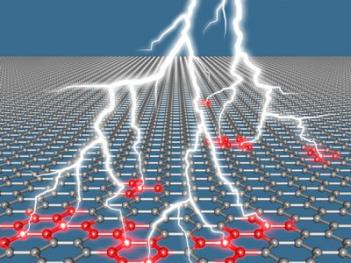Researchers from the Max Planck Institute in Hamburg demonstrated that graphene can be used to emit terahertz laser pulses with long wavelengths. This has been theorized before, but now the researchers actually proved that it can be done. A terahertz direct emission is useful in science but this is the first time that such a laser was developed.

The researcher explain that while graphene band-gap is usually referred to as a zero bandgap, it does have an infinitesimally small bandgap. But the electrons still behave like those of a classic semiconductor, and the population inversion in graphene only lasts for around 100 femtoseconds, less than a trillionth of a second. This means you cannot use graphene for continuous lasers, but it can be used for ultrashort laser pulses.
The researchers also discovered that graphene is probably not suited for converting solar radiation into electricity in solar cells. According to their measurements, a single photon in graphene cannot release several electrons, as previously expected.